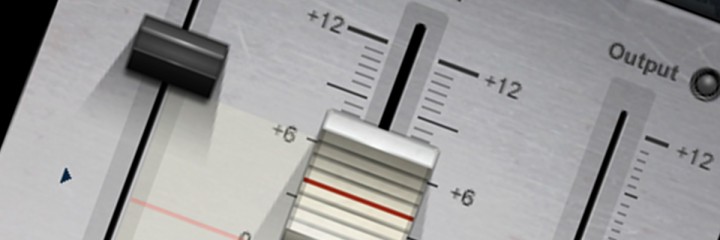While I’m mixing you can’t even imagine how many times my focus is broken by something to fix in the tracks: that kick drum hit that’s not so in time, an incertain bass note, a little vocal part slightly out of tune or other little issues that I can’t stand. Maybe it’s because of my aptidute to be obsessive compulsive or just because I like to do good mixes, I don’t know, but there’s a little truth: if I have to stop mixing every time I notice something to fix on the editing part I can’t focus as I should on mixing.
The point I always like to stress (also to myself, don’t you think Santo?) is that editing is extremely important, you have to carefully carry forward and finish it once for all: laziness is around the corner here, don’t fall in the trap, you could think that the most part of the track is “almost good” just because it will be boring to fix the issues. Let’s be honest: fixing timing issues on each kick drum is really boring. But it’s necessary, just don’t be lazy. If your target is a good mix you can’t skip this passage: good recordings, careful editing, and then great mixes.
Even if you’re editing everything the best you can, there’s something that still lies behind editing, because now you’re listening to every track just from a “technical” point of view, not the musical one. Vocals and Bass (above all) have a wide dynamic range, sometimes it happens that you have an unwanted dynamic variation. Maybe it’s something you didn’t notice while you were recording, but now it’s there. In this case instead of an aggressive compressor (that could ruin the dynamic feel of the track) it’s more advisable to go manual. There’s a lot of way to manually edit and fix this kind of problems, and of course you can find some plugins that can do it for you, my advice is to perform each edit manually but it’s up to you, just remember to not be too lazy! One important thing: if software houses decided to develop plugins to do this kind of editing it means that 1) it’s a very important passage 2) it’s a boring one 😀
Here you can find a quick summary in 3 points on different way to proceed:
- Using volume automation: every DAW you can find on the market (even open source ones) has automation, it’s a way to “pilot” volumes and FX on your tracks. You can draw your automation line (or record it moving you volume faders, but we’ll talk about this in the future) to raise the volume of the “weak dynamic” parts of the track (or lower the louder ones). Quite easy.
- Manually tweaking the gain on single parts: zoom in on the track and find out those region that need to be fixed. If you see that there’s an unwanted weakness in the dynamics, cut the region and raise the gain, listen again until you hear it good.
- Unsing plugins: Waves recently developed its “riders”, the Vocal Rider and the Bass Rider, they do exactly what we’re trying to do manually, you just have to insert the plugin, set it accordingly to your track dynamics and let it work for you during the play. Cons? As you can imagine, they’re not so cheap.
When you’ll be done with this editing process you’ll be really glad, everything will be easier: tracks that are dynamicly consistent have the right properties to sit right with your mix throughout the entire song, you don’t have to worry about anything anymore, just mix. The proof of the pudding is in the eating!


comments